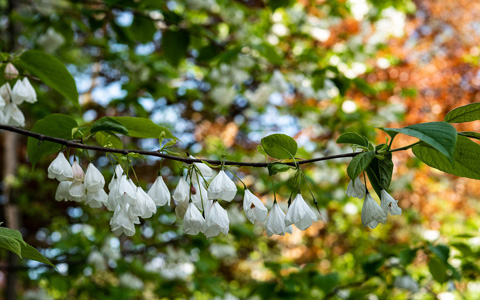Notice: Undefined variable: page in /home/vrxdg1855sn3/public_html/wp-content/themes/72tree/content.php on line 15
Notice: Trying to get property 'ID' of non-object in /home/vrxdg1855sn3/public_html/wp-content/themes/72tree/content.php on line 15
3 Flowering Trees for Your Alpharetta and Roswell Yard

Don’t accept a dull and monochromatic yard. Trees are awakening from their winter slumber and certain species will put on a stunning show of vibrancy and color.
Located in USDA hardiness zone 7b, Alpharetta, Ga is the perfect location for some of the most beautiful flowering trees the South has to offer. If your Alpharetta or Roswell yard doesn’t have one of these trees, you are missing out.
72tree.com gathered care and technical information for flowering dogwood, eastern redbud, and Carolina silverbell blooming tree species perfect for hardiness zone 7b.
Flowering Trees in Alpharetta
The following species are well adapted to the climatic conditions found in Roswell and Alpharetta, Ga. Before choosing a location and breaking ground, read this tree planting guide 72tree.com/tree-planting-guide/
Flowering Dogwood – Cornus Florida is a beautiful tree native to northeastern America, it is hardy in Zones 5 through 9 and flourishes as far west as Texas.

Mature specimens can reach heights of 30 to 35 feet with a crown wider than it is tall. This specimen is considered to be an understory tree with a year-round appeal as it flowers in the spring, maintains attractive foliage throughout summer and fall, and even has an appealing winter appearance.
• Flowering period is April through May with flowers lasting 10 to 15 days.
• Colors include white or pink flowers in spring, bright red fruit in late summer and fall, and light green (spring) dark green (summer) or reddish-purple (fall) foliage.
• Soil should be acidic and well-drained with considerable amounts of organic material.
• Mulch regularly to maintain cool, moist soil.
• Pruning activities should occur either in early or late winter while the tree is in a state of dormancy.
• Susceptible to boring insects, leaf spot, and anthracnose.
When a flowering dogwood must have 25%, or more of its crown pruned to remove an infestation or signs of disease, a certified arborist should be called to evaluate the tree and suggest the best course of action.
Eastern Redbud – Cercis canadensis is noted for being one of the first tree species to flower in the spring. Also native to northeastern America, like the flowering dogwood, it is hardy in Zones 5 through 9 and flourishes as far west as the lower great plains and Texas.

At maturity, the Eastern Redbud reaches heights of 15 to 30 feet with a crown that spreads 25 to 30 feet in diameter. Considered an understory tree, this deciduous specimen provides an incredible show when in bloom.
• Flowering period is March through May before leaf growth. Flowers bloom over the entire crown, creating a “tree of flowers.”
• Colors include pink to reddish-purple flowers, giving way to dark green heart-shaped foliage in late spring.
• Soil should be neutral to slightly alkaline and well-drained for best-growing conditions.
• Pruning activities should occur either in early or late winter while the tree is in a state of dormancy. Pruning helps to strengthen the tree’s structure and promotes its overall health.
• Susceptible to boring insects, redbud leaffolders, grape leaffolder, Japanese weevil, verticillium wilt, Botryosphaeria canker, and leaf anthracnose.
Wildlife tends to leave the Eastern Redbud as a last resort or emergency food source. The tree is fire tolerant, and roots typically sprout after a wildfire or fire-related disturbance.
Carolina Silverbell – Halesia carolina is a flowering understory tree which flourishes in Zones 4 through 8 and is popular for its clusters of white bell-shaped flowers

This species reaches a mature height of 30 to 40 feet with its crown reaching up to 35 feet in diameter, and has a rounded or vase-shape.
• Flowering period is April through May with flowers best observed from below as they hang from pendulous stalks in clusters of 2 to 5.
• Colors include white and sometimes rose flowers in spring, green fruit in late summer turning light-brown in fall, and dark green foliage that turns yellow before falling in autumn.
• Soil should be acidic and well-drained with considerable amounts of organic material.
• This species flourishes when grown in light shade and a protected environment.
• Pruning activities should occur either in early or late winter while the tree is in a state of dormancy.
• Susceptible to tree scale when stressed. Healthy Carolina silverbells are otherwise pest-resistant.
Your Carolina silverbell should flourish with minimal seasonal maintenance. However, in the event of drought or changes in the soil pH, the tree may become stressed and appear to droop or wilt. In these cases, call a certified arborist to evaluate the tree, environment, and soil to suggest the best course of action.
After you select some flowering trees for your yard, visit 72tree.com/3-evergreen-species-alpharetta-roswell-yard/ for some perfect evergreens species, 72tree.com/5-popular-alpharetta-ga-shade-trees/ if you need to add some shade to your yard, or 72tree.com/4-shrub-species-alpharetta-georgia-yard/ for the perfect shrubs that can balance your landscape out.
Southern Blooming Trees
As you drive through the streets this spring, you can marvel at some of the most beautiful flowering trees in the South!
In this article, you discovered important information about the beautiful flowering dogwood, eastern redbud, and Carolina silverbell tree species.
Without one of these flowering trees in your yard, you are passing up the opportunity to provide curb appeal and make your yard captivating.
Sources:
https://plants.usda.gov
https://www.wildflower.org/plants/result.php?id_plant=ceca4
http://www.uky.edu/hort/Flowering-Dogwood
http://www.uky.edu/hort/Carolina-Silverbell
